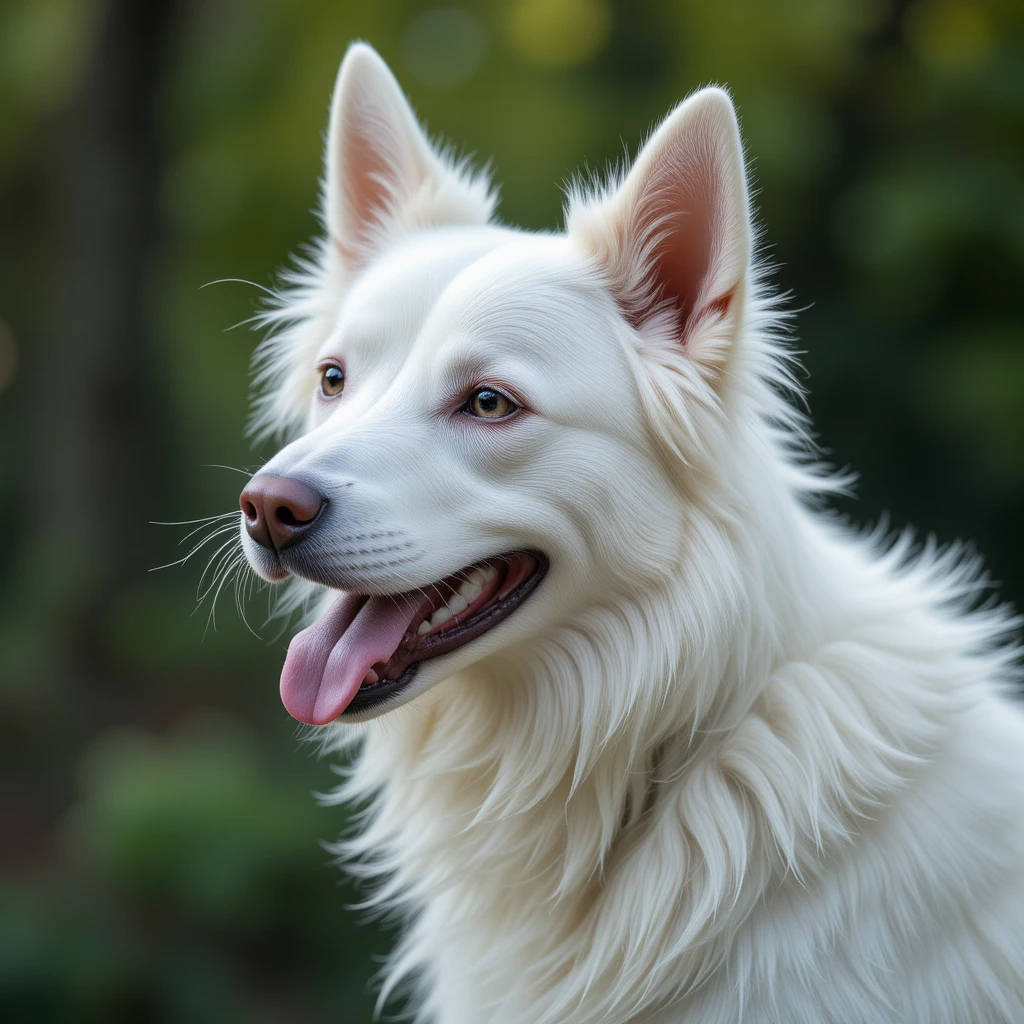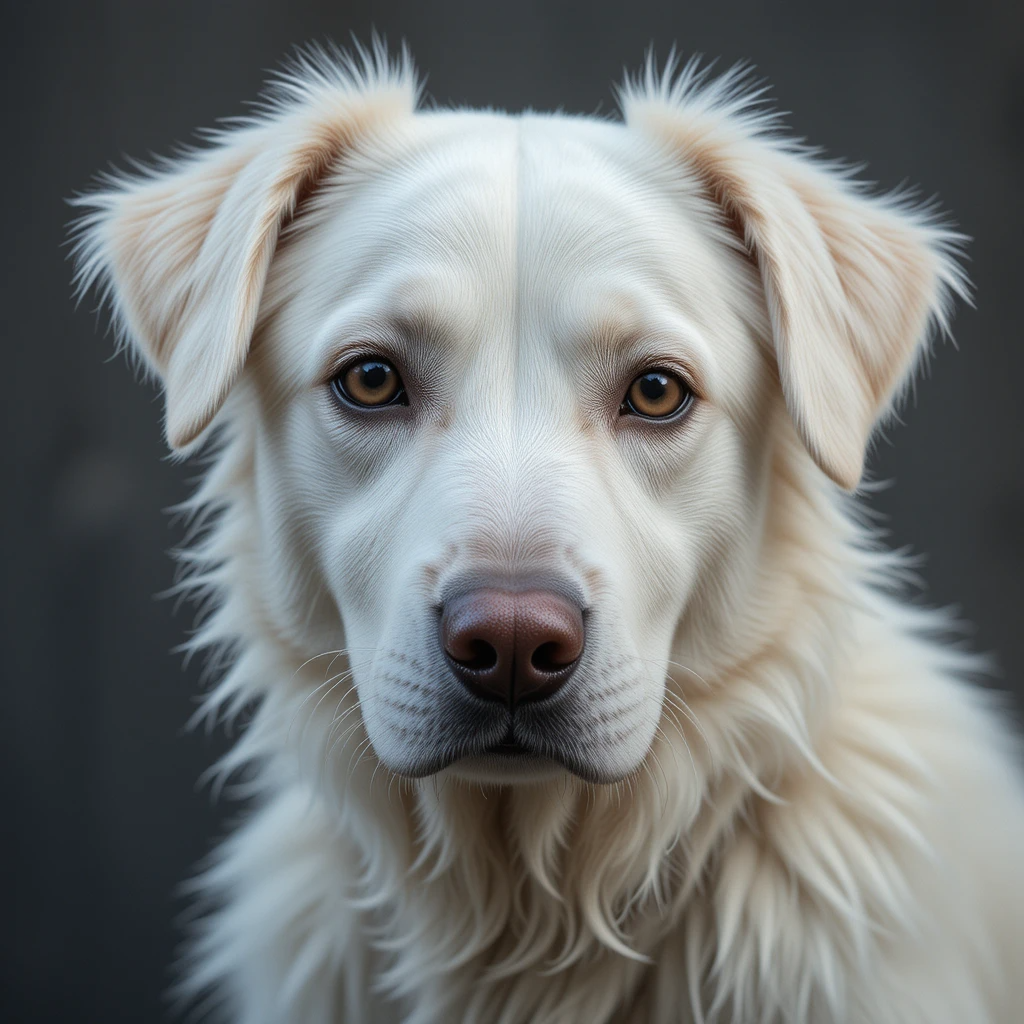Albino dogs are a true marvel of nature, captivating dog lovers with their striking appearance. These dogs, known for their pure white coats, pinkish or pale eyes, and lack of pigmentation, spark a sense of wonder, as they are incredibly rare. But what exactly makes albino dogs so rare, and why do they stand out from the crowd of other canines? In this blog, we’ll delve deeper into albinism in dogs, explore the causes and traits of these unique dogs, and provide insight into the health considerations and ethical concerns that come with owning an albino dog.
Table of Contents
Understanding Albinism in Dogs
Albinism in dogs is a genetic condition that causes a lack of pigmentation, or melanin, in their fur, skin, and eyes. This genetic mutation, although fascinating, affects various parts of the dog’s body. Without melanin, albino dogs often display a coat of pristine white fur, with pale or even pinkish eyes. In contrast to light-colored dogs, albino dogs have a total absence of color, not just a lighter shade. This makes them visually distinct, but it also signifies underlying genetic factors that can impact their health.
It’s important to note that true albinism is extremely rare in dogs. Unlike some animals where albinism may be more common, in dogs, the condition arises due to a recessive gene, meaning both parents must carry the gene for the trait to be passed on. This makes albino dogs a rare occurrence, even among specific breeds that might be more likely to develop the condition.

How Rare Are Albino Dogs?
So, how rare are albino dogs really? It’s incredibly difficult to pinpoint exact numbers, but these dogs are considered one of the rarest types of canines. Albinism in dogs is not a common trait in any specific breed, but it has been reported in a few breeds, including Chihuahuas, Doberman Pinschers, Pitbulls, Dachshunds, and even Labrador Retrievers. However, even within these breeds, albino dogs are an anomaly, often seen once in many generations, if at all.
The rarity of albino dogs is further compounded by the genetic inheritance patterns. Because albinism is recessive, a dog must inherit two copies of the mutated gene—one from each parent—to be born with this condition. For this reason, most dogs will not show signs of albinism, even if they carry the gene. Instead, they will be carriers, meaning they can pass the gene on to their offspring but will not exhibit the physical traits associated with the condition.
Additionally, some breeds may be more prone to developing specific genetic mutations that cause albinism, but true albinism, where the dog has no pigment whatsoever, is still incredibly rare.
The Distinct Traits of Albino Dogs
Albino dogs are easily recognizable, but they don’t just look different—they also experience a set of unique characteristics that can impact their daily lives. Here are some of the key traits of albino dogs:
- White Coat: The most obvious characteristic of an albino dog is its pure white coat. Unlike dogs with light-colored coats like a white Labrador or Maltese, albino dogs have a coat that is completely devoid of pigment. This lack of color often gives them an ethereal, almost ghostly appearance.
- Pink or Pale Eyes: Albino dogs typically have pale or pinkish eyes, which is a result of the lack of melanin in their irises. This gives them a distinctive look that sets them apart from other dogs. The absence of melanin in their eyes can lead to some vision problems, which we will discuss later.
- Sensory Sensitivities: Albinism in dogs often comes with a range of sensory issues, particularly when it comes to vision and hearing. Albino dogs can suffer from conditions like strabismus (crossed eyes), nystagmus (involuntary eye movement), and photophobia (sensitivity to light). Their inability to produce melanin also affects their sensory organs, leading to these difficulties.
Health Concerns in Albino Dogs
While albino dogs may look striking, the condition often comes with health challenges. The lack of melanin can make albino dogs more susceptible to various health problems, particularly in relation to their vision, hearing, and overall immune system. Here’s a closer look at the potential health concerns:
- Vision Problems: One of the most significant challenges for albino dogs is impaired vision. Because they lack pigment in their eyes, albino dogs are often sensitive to light and may experience reduced vision, especially in bright conditions. Strabismus, or crossed eyes, and nystagmus, or involuntary eye movements, are also common in albino dogs. These conditions can make it difficult for them to focus and navigate their environment effectively.
- Skin Sensitivity: Just like albino humans, albino dogs are more prone to skin issues. Without the protection of melanin, their skin is highly sensitive to sunlight, making them vulnerable to sunburns and skin cancer. Albino dogs should be kept out of direct sunlight as much as possible, and pet owners may need to apply sunscreen to protect their dog’s skin.
- Hearing Loss: Albino dogs are also at a higher risk of congenital deafness. While not all albino dogs experience hearing problems, it’s more common due to the genetic mutations that cause albinism. If your dog seems to have trouble hearing, it’s important to consult with a veterinarian to get a hearing test done.
- Weakened Immune System: The genetic mutations that cause albinism can affect the immune system as well. Albino dogs may have a weaker immune response, making them more susceptible to infections and illnesses. Regular veterinary care and early detection are essential to managing these potential health issues.

Caring for an Albino Dog
Owning an albino dog requires extra care and attention. Because of their sensory sensitivities and potential health problems, albino dogs require special considerations to ensure they live a comfortable, healthy life. Here are some tips for caring for your albino dog:
- Limit Sun Exposure: Albino dogs should be kept out of direct sunlight, especially during peak hours when UV rays are strongest. If your dog enjoys spending time outside, make sure they have access to shaded areas. You can also apply pet-safe sunscreen to their skin to provide additional protection.
- Eye Care: Since albino dogs are often sensitive to light, it’s important to monitor their eye health closely. Avoid exposing them to bright, harsh lighting, and make sure they have access to comfortable, dimly lit areas where they can rest without feeling overwhelmed.
- Regular Vet Check-ups: Albino dogs may require more frequent vet visits to monitor their health, particularly their vision, hearing, and immune function. Keeping up with vaccinations and regular check-ups will help catch any issues early on and ensure your dog remains healthy.
- Provide a Safe and Stimulating Environment: Since albino dogs may have sensory impairments, it’s essential to create a safe environment that helps them navigate with ease. You can use furniture and objects to create clear pathways in your home, and provide them with stimulating toys and activities that don’t rely on sight or hearing alone.
Ethical Considerations of Breeding Albino Dogs
The topic of breeding albino dogs raises important ethical questions. While the rarity of albino dogs can make them highly sought after, breeding them solely for their unique appearance is not responsible. The genetic mutations that lead to albinism can cause serious health problems for dogs, and breeding dogs for aesthetic purposes can result in animals with compromised health.
Responsible breeding practices focus on the health and well-being of the dog, not just its appearance. Ethical breeders prioritize genetic diversity and work to reduce the risk of genetic conditions like albinism. If you’re considering adopting an albino dog, ensure you choose a reputable breeder who is transparent about their breeding practices and the potential health risks.

Conclusion
Albino dogs are truly unique creatures that captivate with their striking appearance. However, their rarity and the challenges that come with their genetic condition make them a special responsibility for pet owners. If you’re fortunate enough to share your life with an albino dog, it’s important to be prepared for the extra care they need, from protecting them from the sun to keeping an eye on their health. Albino dogs may be rare, but with the right care, they can lead long, happy, and fulfilling lives. As always, responsible ownership and ethical breeding practices should guide your decisions when it comes to these fascinating animals.

